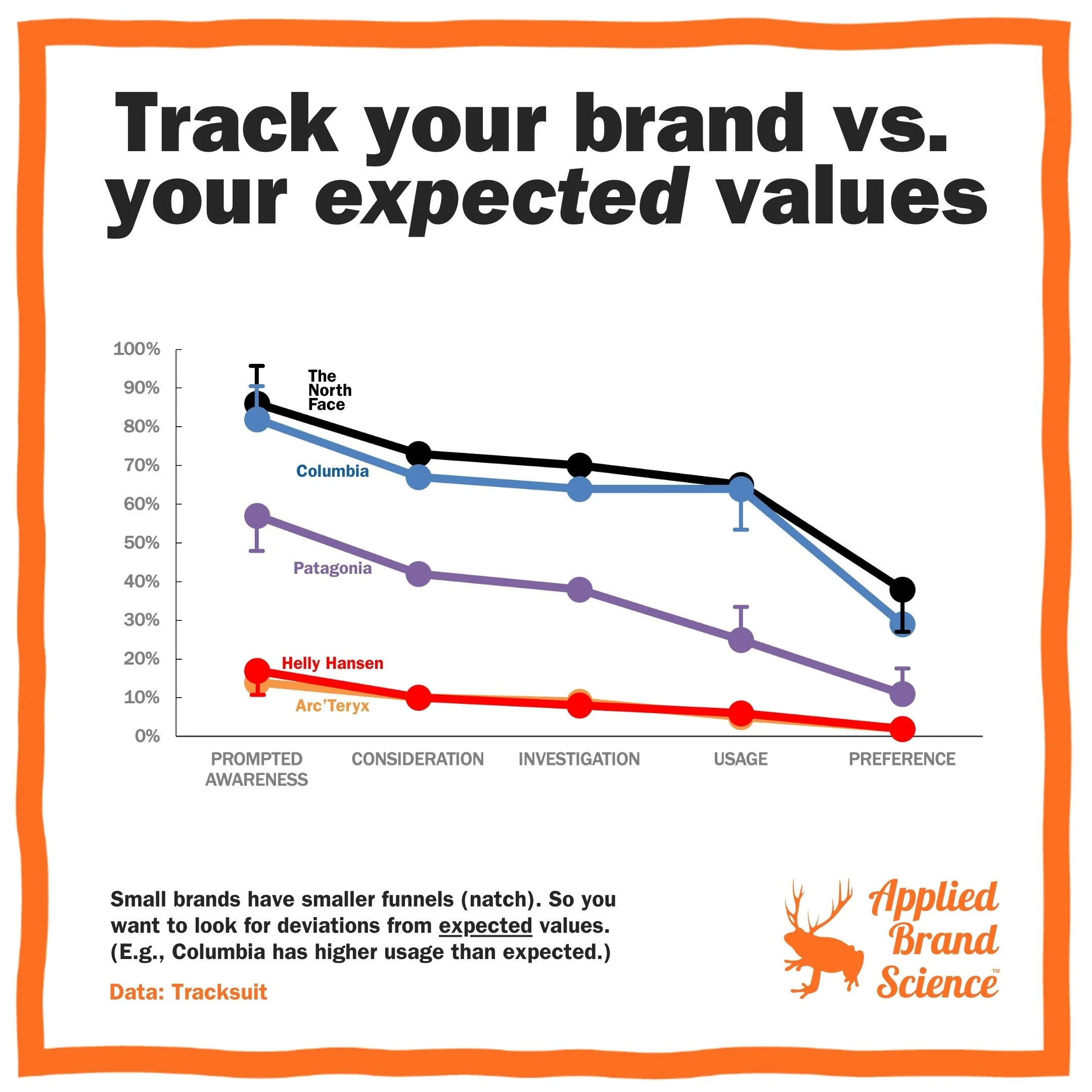How should you interpret your purchase funnel?
Like, should you worry if your consideration rate is lower than the industry average?
F’rinstance, if you look at outdoor apparel brands in the US, you find that The North Face’s funnel is big, Patagonia’s is medium, and Helly Hansen’s is tiny.
Should Helly Hansen freak out because all their numbers are so small? Should Patagonia worry that their consideration is ‘below industry average’?
Nope. Because these numbers are highly correlated with how big the brand is. TNF’s market share is like 37%, Patagonia’s is like 10%, and HH’s is, well, tiny.
So instead of comparing directly, or comparing to industry averages (blecch), you should compare your brand funnel & brand health numbers to EXPECTED values given your brand’s size (e.g., market share).
When you see deviations from expected values, that’s when you want to start investigating. And then explore ALL the reasons why. It might be distribution, or assortment, or price — or yes, maybe even brand image.
Patagonia has lower brand awareness than you’d expect given its size. (Maybe Patagonia doesn’t advertise enough: they don’t do much, and their favorite levers are catalogs & retail stores).
And Columbia has higher usage than expected. (Maybe because it’s so affordable, or it’s sold in more stores like Kohl’s, or it’s ‘everyday beater jackets’.)
The good folks at Tracksuit have been tracking thousands of brands around the world; chances are good they’re already tracking yours.
Caveats, of course: this stuff is complex. And even the purchase funnel has been questioned. But these are good ‘brand vitals’ to know.
Some lessons:
🍊 Track your brand health! Get a grip on how your brand is doing in people’s minds.
🍊 Compare against expected values, not industry averages.
🍊 Look for wiggle around those expected values. And then explore that.

